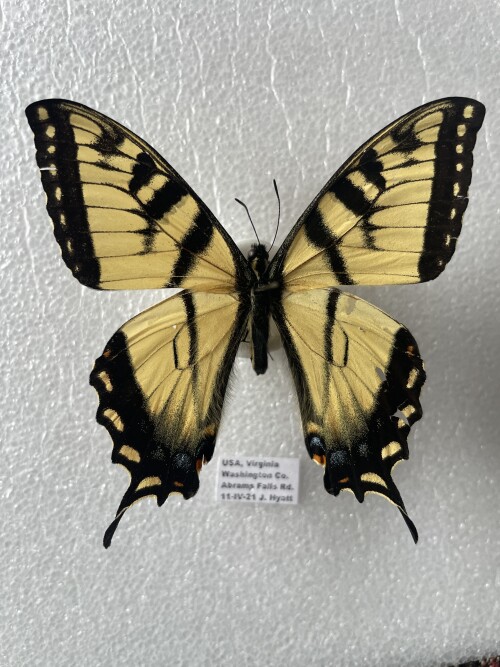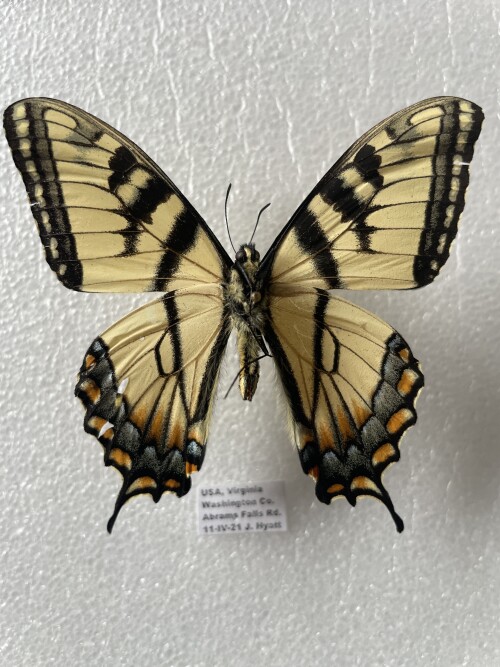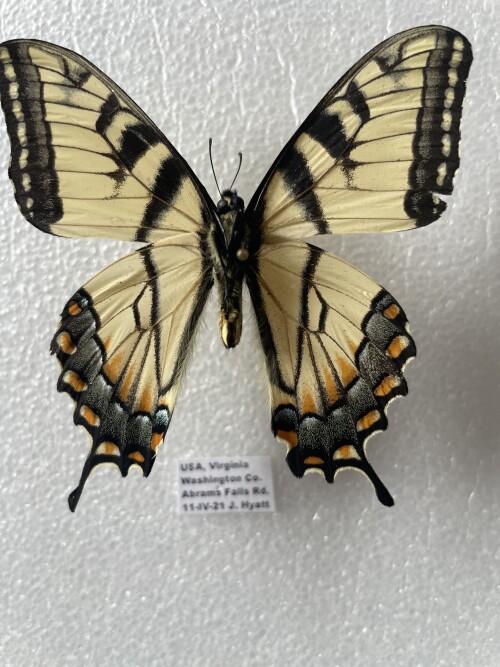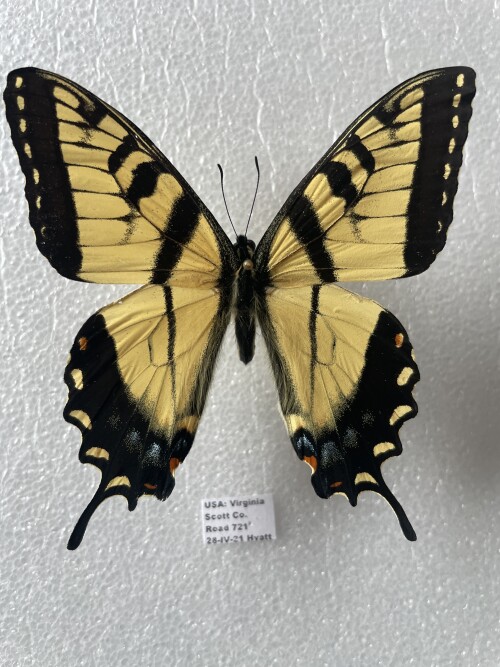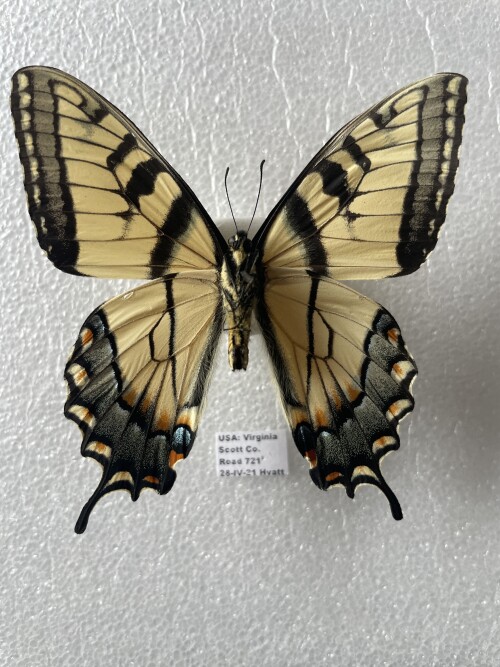With Pavulaan's description of bjorkae, and identification but not description of "near-canadensis" I compared his images to my Spring Form specimens. I have in some cases made reference, or coined these by name, but do NOT use Pavulaan's naming conventions to refer to any of these- if you read any of Pavulaan's names it refers to those specimens he has depicted in the description of bjorkae.
I make no inference that any of these hold taxonomic status, or are forms, or whatever. I refer to each as a "morph" for lack of better standing.
What I don't depict, but may add later, is the June morph/ flight that used to be common in the 1970s and 1980s.
THIS IS WORK IN PROGRESS. Saved so if there's a hiccup I don't lose everything.
#1. I thought this was canadensis until Eurytides said "no it's not" and I took a closer look. Previous images of this specimen used in the seasonal reports for NYS reference this specimen as
canadensis, which I now know is wrong.
DESCRIPTION: Very small, very hairy. Has the big "mohawk" like
canadensis. Longer tails than
canadensis. HW lunules more like
glaucus. Claspers are yellow-brown, not mottled like
canadensis.
OCCURANCE: Mid-may, first flying morph. This morph occurs along the SE shore of Lake Ontario, which is very cold in Spring. Somewhere as one wraps east then north around Lake Ontario this morph it runs into, and then is replaced by, canadensis. Not common, very difficult to capture; never observed nectaring but rather a ground-feeder.
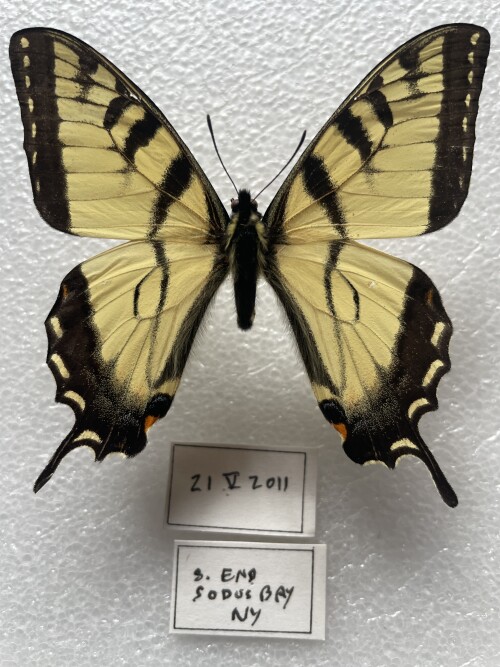

#2. Rather common in late May in the hilly regions of Finger Lakes. Still a bugger to catch.
DESCRIPTION: Mid-sized between canadensis and MST. Universally pale yellow upper side; little variation in individuals.
OCCURANCE: Mid- to late-May. If timing is right, it can be found nectaring on Lilac. Hilly regions, including towns, below US Routes 5 & 20, particularly along the shorelines of the Finger Lakes themselves. A forest flyer, often seen battling near forest edge. Comes low only to nectar or ground feed.
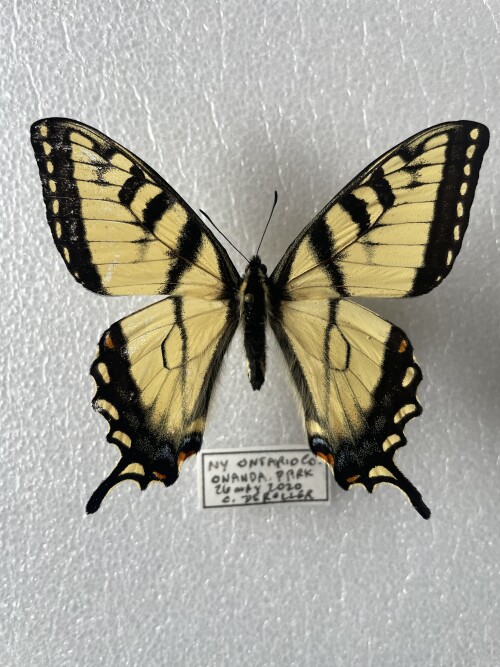
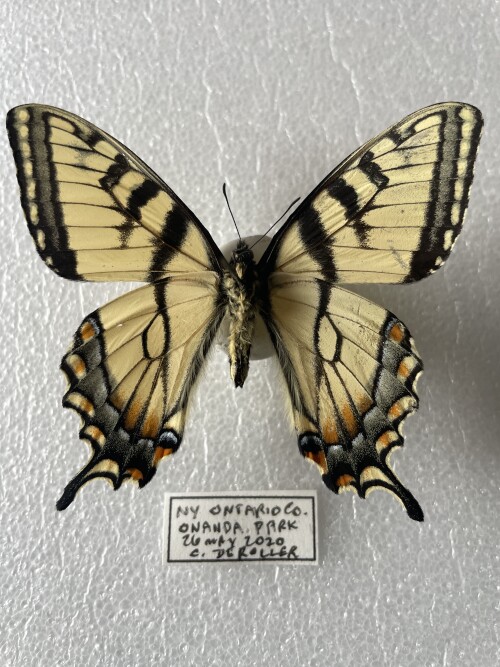
#3. Same size as MST, larger than #2 above. It's hard from photos, but in real life they appear different and act differently than #2. Discernability from MST is questionable.
DESCRIPTION: Like #2 above, but yellow upper side is more orangish. Larger than #2, about the same size as MST.
OCCURANCE: Late May- ??. Likes to hilltop. Flies on forest canopy whether that's 80' oaks or short scrub. Quite commonly seen when temperature above 65F and sunny, likes to fight. Will alight on sun-drenched trees that are not the foodplant, with multiple individuals on one tree; when frightened will return. Still a bugger to catch.

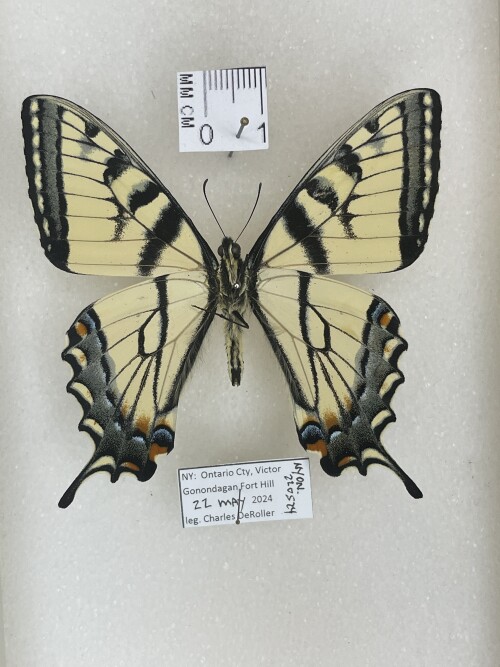
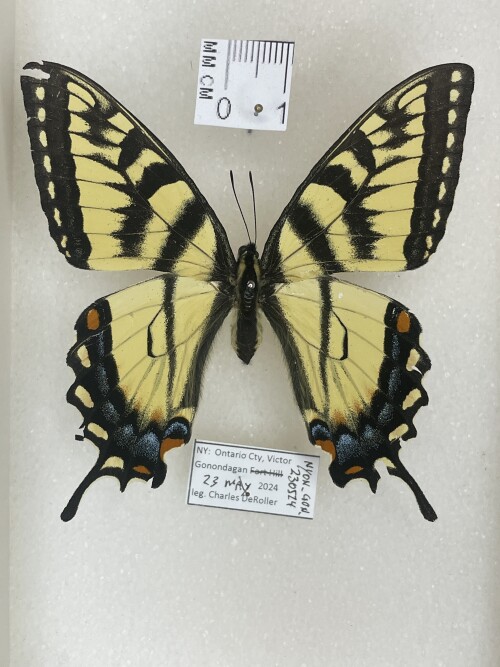
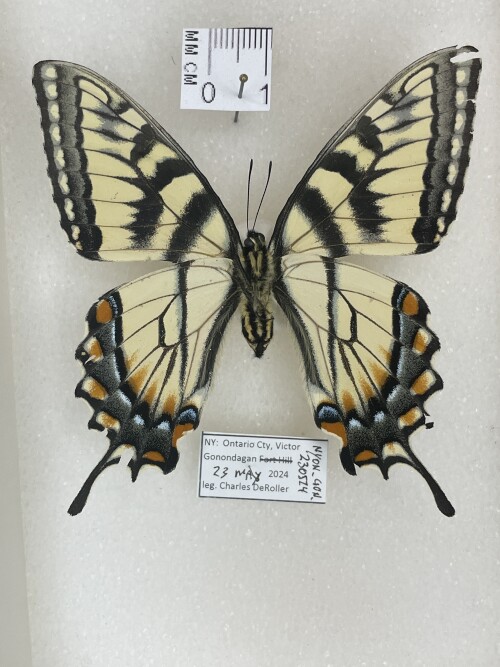
#4. Now, this is where things get dicey. Up in eastern Ontario Canada, where Eurytides studies, an area where Tigers including MST have been very well documented, it's easy- a flight of canadensis, then a flight of MST with virtually no overlap. As one can see so far, from mid-May (14 May to be exact, never earlier, but maybe a few days later if 14 May is rainy) through (below) June there are Tigers...which rolls straight into the ~01 July MST emergence. And, as you will note in specimen #4 below, it becomes very difficult to discriminate between these June Tigers and MST based on morphology alone. This specimen was ovipositing on apple, not a recognized larval food plant.
DESCRIPTION: I can't tell from MST; within morphology of MST. Same size as MST.
OCCURRANCE: Not common; far less frequent than #2 / #3 above. Some years I've seen zero in June. Explain that.
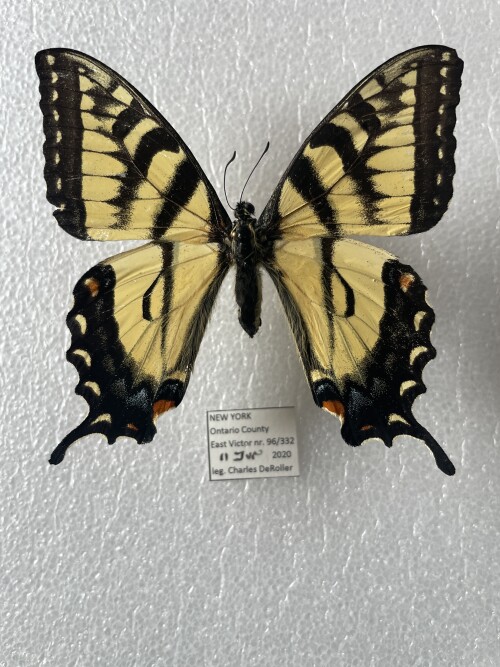
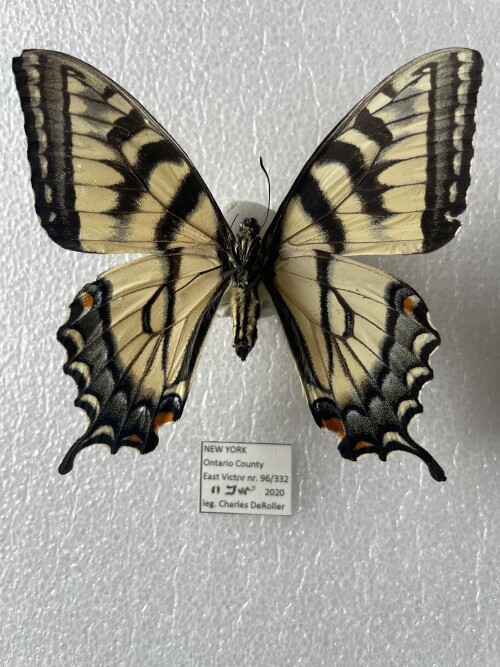 VIRGINIA
VIRGINIA
The following are Spring Form "glaucus" from the Appalachian Mountains of Virginia. Constrast these to Pavulaan's Spring Form confirmed "glaucus" Figures 12-17 from Rhode Island. These from Virginia don't look very glaucus-y or like Pavualaan's. More later.
